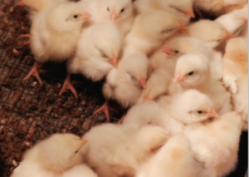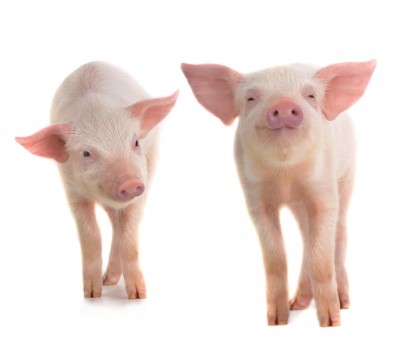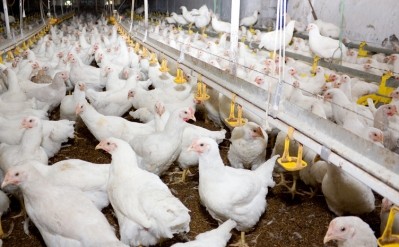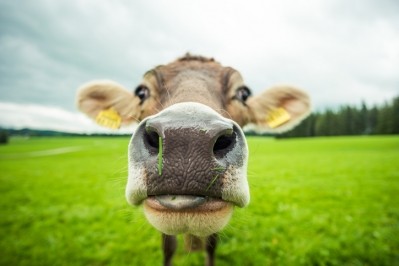Reports from IPPE 2017
Can spray-dried plasma boost gut health in young poultry?

A talk on use of the ingredient featured Steven Leeson, professor emeritus from the University of Guelph, and looked at the implications of including plasma in the diet for young birds raised both with or without use of antibiotics.
He also addressed concerns regarding the use of the ingredient and necrotic enteritis and other diseases.
The talk was hosted by plasma functional protein producer, APC, at last week’s International Processing and Packaging Expo (IPPE) in Atltanta.
Including spray diet plasma (SDP) in the diet is one way to offer highly digestible nutrition for young birds and reduce the amount of protein, amino acids and nitrogen reaching the large intestine or cecum and supporting the growth of negative bacteria, Leeson said.
“The main issue is undigested nutrients reaching the large intestine and the cecum,” he said. “The main nutrient is protein – most of your problematic bacteria are proteolytic – they’re not looking for energy, they’re looking for protein, or nitrogen or amino acids, so if you feed them with undigested material then they’re going to thrive.”
Disease concerns
Diseases like BSE or the porcine epidemic diarrhea virus (PEDV) may have cast suspicion on to the use of animal-based proteins in feed, but those concerns have also led to improvements in how meat meals are processed, said Leeson.
There may have been a link between meat meal and diseases caused by undigested protein when meal quality was poor, he said. “If you have a protein that’s undigested, then yes, you’re going to get necrotic enteritis – but today, with the quality of animal proteins that we have, then animal proteins are your friend again,” he added.
“[Some observers] make the claim that you can’t feed animal proteins in an ABF [antibiotic-free production] system because it will cause necrotic enteritis – that’s a myth.”
Gut health and production changes
Leeson has been examining gut health and the composition of pre-starter diets for poultry raised without some kinds of antibiotics, he said.
The lack of new types of antibiotics or anticoccidials coming down the pipeline today is a challenge, he said. “With anticoccidials we relied on a new one every ten years to help us because they wear out – now I don’t think you’ll ever see a new one.”
Working without a growth-promoting antibacterial is not the primary challenge, said Leeson. Instead, producers need some way to manage coccidiosis.
“If you can control cocci, then you go a long way in an antibiotic-free system,” he said. The more options for managing the bacteria or necrotic enteritis removed, the more challenging the process becomes, he added.
Replacement and alternative products like essential oils, probiotics, butyric acid or prebiotics do not always work, he said. But use of feed ingredients like spray-dried plasma in early diets, instead of a corn-soy feed, may also help by reducing the amount of undigested nutrients.
“When the chick hatches, it’s very much like the early weaned pig, it goes from utilizing yolk fat lipid proteins to corn-soy overnight which we think is highly digestible, but it probably isn’t as much as we think.
“It’s this transition that we’re concerned about today and it probably kicks off the gut health issues,” he said. “You’re probably not going to see those gut health issues at the farm level for 14-15 days – it takes that long for the microbial population to change and get out of whack.”
Plasma use and gut support
When addressing gut health issues, or seeking to prevent them, anything that can support the structure is a benefit, said Leeson. Use of plasma appears to improve villi length, he added.
Supplementing the ingredient to the diet helps calm the immune response, he said. “You’re going to see better livability, slightly better growth rate and you almost always see better feed efficiency – that’s the big factor,” he added.
The improved feed efficiency likely stems from two areas – improved gut villi microstructure and the calmer immune response, said Leeson. The ingredient can improve feed conversion by about five to seven points.
In previous studies looking at plasma in the face of a challenge from necrotic enteritis, it improved both bird survival and feed intake, he said. And in a review of multiple studies looking at its use, feed conversion and weight gain saw improvement.
“As nutritionists we can influence the microbial population without pharmacological intervention,” he said. “Specialized pre-starters in these situations for gut health are all about ingredients and not about nutrients – you can probably feed 10% less nutrients, but you’ve got to feed highly digestible ingredients.”
Since the late 1980s, spray-dried animal plasma products have been used in North America and Asia (Gatnau and Zimmerman, 1990).
According to a review in Animal Nutrition, the vast majority of researchers have reported that the response to dietary SDP was more pronounced in production conditions with high pathogen exposure than in clean rearing environments.
"This could be due to the immunological properties of SDP. Spray-dried plasma is processed to preserve the functional properties of proteins, including biologically active peptides such as albumin and IgG (Quigley and Wolfe, 2003).
"Dietary spray-dried porcine plasma could possibly improve the performance of broilers raised under challenge conditions, predominantly in the starter phase (Henn et al., 2013). [The] same observations have been reported in turkey poults (Campbell et al., 2004a) and pigs (Coffey and Cromwell, 1995 and Stahly et al., 1994).
"Spray-dried plasma contains a diversity of functional proteins such as albumin, immunoglobulins, growth factors, and biologically active peptides (Borg et al., 2002)."













